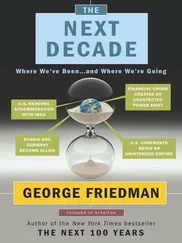Possibly most intriguing is the relationship between the deaths of males and the deaths of their female spouses. The film director Edward Dmytryk, who died at ninety after a life full of challenges, was survived by his wife of sixty-four years. Norris Bradbury, the award-winning atomic physicist who lived to eighty-eight, was survived by his wife of almost sixty-five years. Even Ancel Keys, the cholesterol expert who lived to be a hundred was—yes—survived by his wife. However, what about those men who lost their wives? Many of the Terman men who were widowed did not live much longer after their loss. This was even the case for Terman himself—his wife, Anna Belle Minton Terman, died in early 1956, and he died later that same year, right before Christmas.
We know that much of the health and long life of the Terman men was facilitated by having a supportive wife and stable marriage, but was this related to the feminine dimensions typically provided by the wives? Did each spouse’s masculinity/femininity and related traits really matter?
Measuring Masculinity and Femininity
Paul was a tough, masculine guy while James was more of a “family man.” Linda was quite feminine while Donna was more of a tomboy. When we started investigating male-female differences in longevity we decided to distinguish biology from psychology—what is usually called the difference between biological sex and social gender. Biological sex refers to whether one is female or male—in chromosomal terms, XX or XY. Gender, on the other hand, refers to the psychosocial category of male-typical versus female-typical identities and behaviors. These are the qualities of masculinity versus femininity. You can easily relate to this difference by calling to mind girls who are labeled “girly girls” as compared to tomboys or contrasting a polite, “man of the arts” type with a rugged and somewhat crude “tough guy” type.
Being more masculine or feminine is not at all the same as being homosexual or heterosexual. Dr. Terman himself, more than a half century ago, explained it this way: “It would be a grave error to assume that any M-F [masculine-feminine] score approaching the mean of the opposite sex justifies in itself a diagnosis of homosexuality. One may be a fairly pronounced invert in sex temperament without being at all a sex invert [gay] in the usual sense.” 83 83 Dr. Terman’s explanation of the fact that scoring similarly to someone of the opposite sex was not diagnostic of homosexuality is in Terman and Oden, Genetic Studies of Genius , vol. 4, The Gifted Child Grows Up , 201.
By the way, there were of course gays and lesbians in the study, and some married (the opposite sex), which was not unusual in the 1930s and 1940s. But because of the significant threats to individuals who were openly gay, Dr. Terman hid their identities. He even destroyed letters and other information. So our analyses of men and women could not directly take sexual orientation into account.
This issue of masculinity and femininity was a tricky subject to try to investigate. If we used typically male-associated behaviors like drinking, smoking, and promiscuity to define masculinity, then we would be biasing our results because these behaviors are known to be unhealthy. We had to find a way to evaluate masculinity and femininity without tapping into unhealthy lifestyles in our measures.
So we turned to a collaboration with well-known gender expert Dr. Richard Lippa at the California State University in Fullerton. Richard created “gender diagnosticity” scores indicating how masculine or feminine each person was. His approach is important because many traditional masculinity measures seem really to be measuring instrumentality—the quality related to serving a purpose and reaching a goal. In western cultures, instrumentality is more prevalent in men, for a variety of reasons. Many femininity scales seem really to be measuring emotionality or expressiveness—qualities of being caring and sensitive to others’ feelings. Expressiveness is more prevalent in women. Although such masculinity and femininity scales are pretty good at describing the stereotypical man or woman, they aren’t very good at taking account of certain other aspects of our understanding of what it means to be “masculine” and “feminine.” More than that, they do not yield a good enough sense of health-relevant hobbies, interests, activities, and behaviors. And, importantly, we wanted to know how masculine or feminine each individual Terman participant was compared to his or her fellow subjects.
To create our gender diagnosticity scores, we went beyond the traditional measures, using information that Linda, Donna, James, Paul, and the others provided (at around age thirty) about their preferences and interests in various types of occupations. The participants had rated their degree of preference—like, indifference, or dislike—for about a hundred occupations. We then used statistical techniques to calculate gender diagnosticity scores from these preference ratings. Working backward, in order to avoid stereotypes, we computed the probability that a participant was male or female, given his or her occupational preferences. Mechanical engineer, factory manager, and chemist were male-type occupations, preferred by the Terman men. Interior decorator, florist, social worker, and librarian were female-type occupations, generally preferred by the women. By working in reverse, we were able to discover the masculine men and the more feminine men, as well as the more masculine women and the feminine women. And we were able to avoid stereotypes. Who lived the longest?
Masculine and Feminine Men
Paul (the sardonic jokester), predictably, scored as highly masculine—he gave higher preference ratings to the occupations that other Terman men chose, and gave low interest ratings to the occupations that were typically chosen by women. Outgoing and something of a loudmouth, Paul was a classic “man’s man.” Although his career path took him in various directions, not all of them stereotypically masculine (recall that he drifted from newspaper reporter to salesman, proofreader, and finally bookstore manager), his interests and identity were far from feminine. He was an active child, reported by his mother as having an “extraordinary amount of physical energy, ‘pep’ and animation. Dynamic and tireless.” He was curious and mischievous, which sometimes got him into trouble. Though he didn’t suffer any serious accidents in childhood, he had a lot of skinned knees. His mother also noted that he was punished “rather frequently” and that physical punishment seemed to work best. An avid sports fan, both as a participant and a spectator, Paul played shortstop on baseball teams from the time he was in third grade until he finished college. He also played intramural football throughout his college years and was a supporter of the local sports teams. His other hobbies included sportswriting, camping, hunting, electronic gadgetry, and sports cars.
The ever-tactful James, in contrast, was lower on the masculinity scale. A thoughtful husband to his wife, Irene, and involved father to his three children, the sensitivity James’s mother had noted many years earlier (“sensitive to approval or disapproval of other children. Can’t endure to be disliked”) had developed into something more akin to empathy. Rather vain as a child (he was described in elementary school as one who “fishes for praise”), his awareness of the perceptions of others probably helped him to excel later in his job as a public relations officer. Though of average musical talent, James enjoyed music, and he demonstrated an extraordinary appreciation for beautiful colors and forms; his mother noted that at an early age he had “natural taste.” Original and resourceful in childhood, James was described as a nonconformist by his wife, and indeed his hobbies failed to conform to traditional male stereotypes—he listed art, movies, music, and attending plays as his favorite pastimes. All told, James scored fairly high on femininity, showing more interest in the occupations that women tended to choose than Paul had.
Читать дальше











